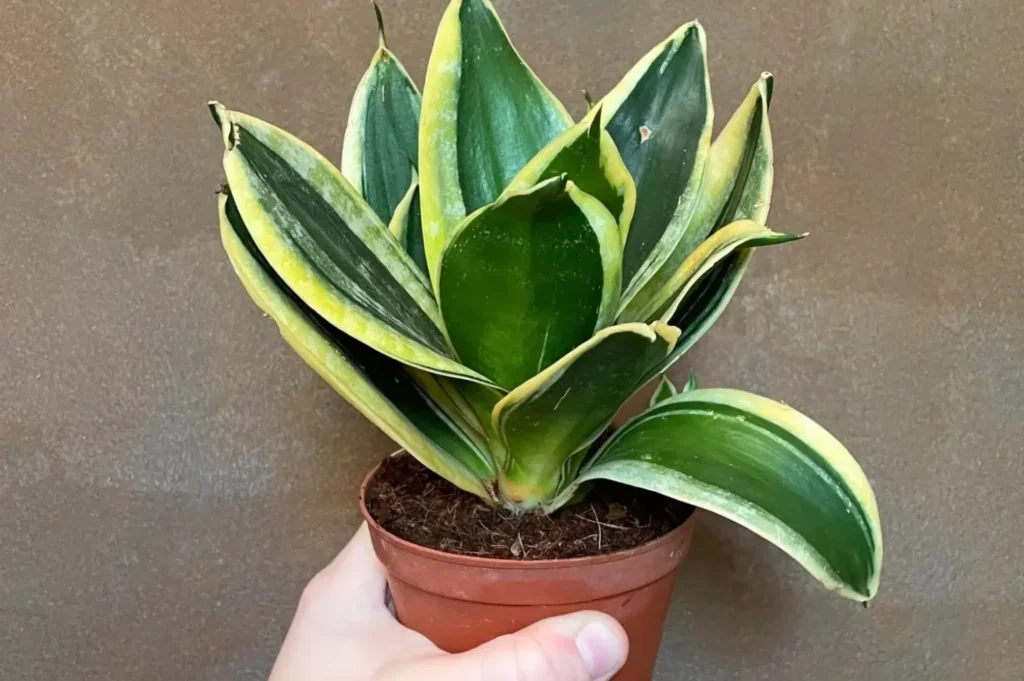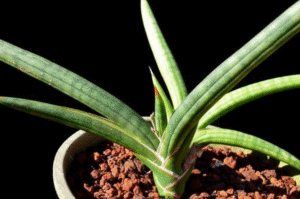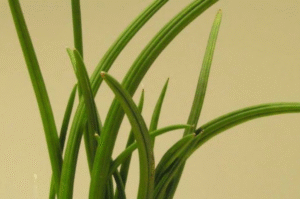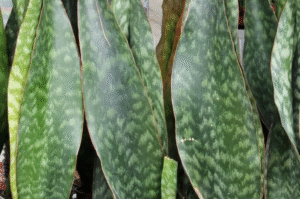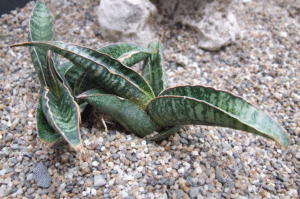Dracaena trifasciata ‘Jade Pagoda’ is one of the most striking and resilient cultivars from the snake plant family. With its deep green, chubby leaves arranged in tight spirals, this compact beauty is not just easy on the eyes — it’s also one of the easiest plants to care for. If you’re someone who wants a low-maintenance plant with high visual impact, the ‘Jade Pagoda’ deserves a spot in your indoor garden.
In this comprehensive care guide, we’ll walk you through everything you need to know about planting, growing, and maintaining a thriving Dracaena trifasciata ‘Jade Pagoda’.
What is Dracaena trifasciata ‘Jade Pagoda’?
Botanical Overview
Previously categorized under the genus Sansevieria, Dracaena trifasciata ‘Jade Pagoda’ is a dwarf cultivar known for its thick, cylindrical, dark green leaves. Its structure is reminiscent of a pagoda temple (compact, symmetrical, and ornamental).
Key Features:
- Succulent-type, stiff leaves
- Jade to dark green coloration
- Grows in tight, rosette-like spirals
- Slow grower, ideal for desktops and shelves
- Air-purifying capabilities
This cultivar is perfect for indoor plant lovers who appreciate structural beauty and want a fuss-free plant companion.
How to Plant Dracaena trifasciata ‘Jade Pagoda’
Proper planting lays the foundation for healthy growth. Let’s get it right from the start.
1. Choose the Right Pot
Go for a terracotta or ceramic pot with drainage holes. These materials allow better air flow and moisture evaporation, preventing root rot, a common issue with snake plants.
Pro Tip: Avoid glazed pots without drainage holes. Trapped water can damage the roots and leaves.
2. Use Well-Draining Soil
Dracaena trifasciata ‘Jade Pagoda’ prefers a soil mix that mimics its native dry conditions. Use:
- 2 parts cactus mix
- 1 part perlite
- 1 part coarse sand
This mix provides excellent drainage and prevents soggy roots.
3. Planting Process
- Fill the bottom of the pot with your soil mix.
- Place the plant gently into the pot, keeping the base slightly above the soil line.
- Fill in around the root ball without burying the crown.
- Tap the pot to settle the soil and water lightly.
Light Requirements
The Jade Pagoda is extremely adaptable but performs best under bright, indirect light.
Ideal Conditions:
- Near an east or west-facing window
- Filtered sunlight through sheer curtains
- Can tolerate low light, but growth may slow, and color may fade
Warning: Prolonged direct sunlight can cause leaf scorching.
Temperature & Humidity
This plant thrives in moderate household conditions, but here’s what it likes best:
| Factor | Ideal Range |
| Temperature | 65–85°F (18–29°C) |
| Cold Tolerance | Not below 50°F (10°C) |
| Humidity | Average indoor (30–50%) |
It doesn’t require added humidity, making it ideal for air-conditioned or heated homes.
Watering Guide: The “Soak and Dry” Rule
Overwatering is the leading cause of problems in snake plants. Stick to this golden rule: Water only when the soil is completely dry.
Watering Frequency:
- Spring & Summer: Every 2–3 weeks
- Fall & Winter: Once every 4–6 weeks
How to Tell It Needs Water:
- Soil is bone dry 2–3 inches deep
- Leaves begin to wrinkle or feel soft
Important: Never let the plant sit in water. Use saucers with caution.
Fertilizing for Healthy Growth
Although the ‘Jade Pagoda’ doesn’t require frequent feeding, a light dose of fertilizer during the growing season can enhance growth and color vibrancy.
Fertilizer Recommendations:
- Type: Balanced 10-10-10 or 20-20-20
- Form: Water-soluble or slow-release pellets
- Schedule: Once a month during spring and summer
- Dilution: Half-strength solution to avoid over-fertilizing
Avoid fertilizing in winter, as the plant enters dormancy and won’t use the nutrients efficiently.
Pruning and Maintenance
Minimal pruning is needed. Remove dead or damaged leaves by cutting them at the base with sterilized scissors or shears.
General Maintenance Tips:
- Clean dust from leaves with a damp cloth
- Rotate the pot monthly to ensure even growth
- Check roots annually to see if repotting is needed
Repotting: When and How
Dracaena trifasciata ‘Jade Pagoda’ grows slowly and typically needs repotting every 2–3 years, or when roots start pushing through the drainage holes.
Repotting Steps:
- Choose a pot 1–2 inches larger in diameter
- Refresh with new cactus/succulent soil mix
- Remove the plant, shake off old soil, and check for root rot
- Replant and water lightly
Best Time to Repot: Spring or early summer, during the active growing season.
Propagation: Expand Your Collection
There are two main ways to propagate the Jade Pagoda:
1. Leaf Cuttings (in Soil)
- Cut a mature leaf near the base
- Let it callous over for 1–2 days
- Insert into moist succulent soil
- Place in a bright, indirect light spot
- Mist occasionally until roots develop
2. Division
- Gently pull apart the root ball into smaller sections, each with at least one rosette
- Replant each section in separate pots
Note: Leaf propagation may result in slight variations due to hybridization.
Common Problems and Solutions
Even the hardiest plants can experience issues. Here’s how to troubleshoot:
1. Yellowing Leaves
Cause: Overwatering
Fix: Let the soil dry completely; repot if needed
2. Brown Tips
Cause: Underwatering, dry air, or salt buildup
Fix: Increase watering slightly, wipe leaves, and flush soil occasionally
3. Mushy Base or Leaves
Cause: Root or crown rot
Fix: Remove damaged parts, let the plant dry out, and repot in fresh soil
4. Stunted Growth
Cause: Lack of light or nutrients
Fix: Move to a brighter location and fertilize moderately
Is It Toxic to Pets?
Yes. Like other snake plants, ‘Jade Pagoda’ contains saponins, a compound that is mildly toxic to cats and dogs if ingested. It may cause:
- Vomiting
- Diarrhea
- Drooling
Keep this plant out of reach of pets and children.
Quick Care Summary Table
| Category | Care Instruction |
| Light | Bright, indirect (low-light tolerant) |
| Water | When soil is dry (every 2–4 weeks) |
| Soil | Cactus mix + perlite + sand |
| Fertilizer | Monthly in spring/summer (half strength) |
| Temperature | 65–85°F (avoid below 50°F) |
| Humidity | Average indoor (30–50%) |
| Repotting | Every 2–3 years |
| Propagation | Leaf cuttings or division |
| Pet Safety | Mildly toxic |
Frequently Asked Questions (FAQs)
How big does the Jade Pagoda snake plant get?
The Jade Pagoda is a dwarf variety and typically grows up to 6–12 inches (15–30 cm) in height. Its compact form makes it ideal for tabletops, shelves, or small decorative pots.
Can Jade Pagoda survive in low light?
Yes, it can tolerate low-light conditions, though it will grow more slowly and the leaf color may not be as vibrant. For best results, place it in bright, indirect light.
Is Dracaena trifasciata 'Jade Pagoda' good for beginners?
Absolutely. It’s one of the most beginner-friendly indoor plants, requiring minimal watering, tolerating different light levels, and needing little maintenance.
How often should I repot Jade Pagoda?
Every 2–3 years, or when the plant becomes root-bound. It’s a slow grower, so frequent repotting isn’t necessary.
Can I keep Jade Pagoda in the bedroom?
Yes! It releases oxygen at night, making it an excellent choice for bedrooms. Just make sure it gets some indirect sunlight during the day.
Final Thoughts
The Dracaena trifasciata ‘Jade Pagoda’ is more than just a houseplant; it’s a living sculpture that enhances any interior with minimal effort. Its tolerance to neglect, low light, and dry air makes it ideal for both beginners and experienced plant parents.
With the right care outlined above, your Jade Pagoda will remain a beautiful, low-maintenance feature in your home for many years to come.

